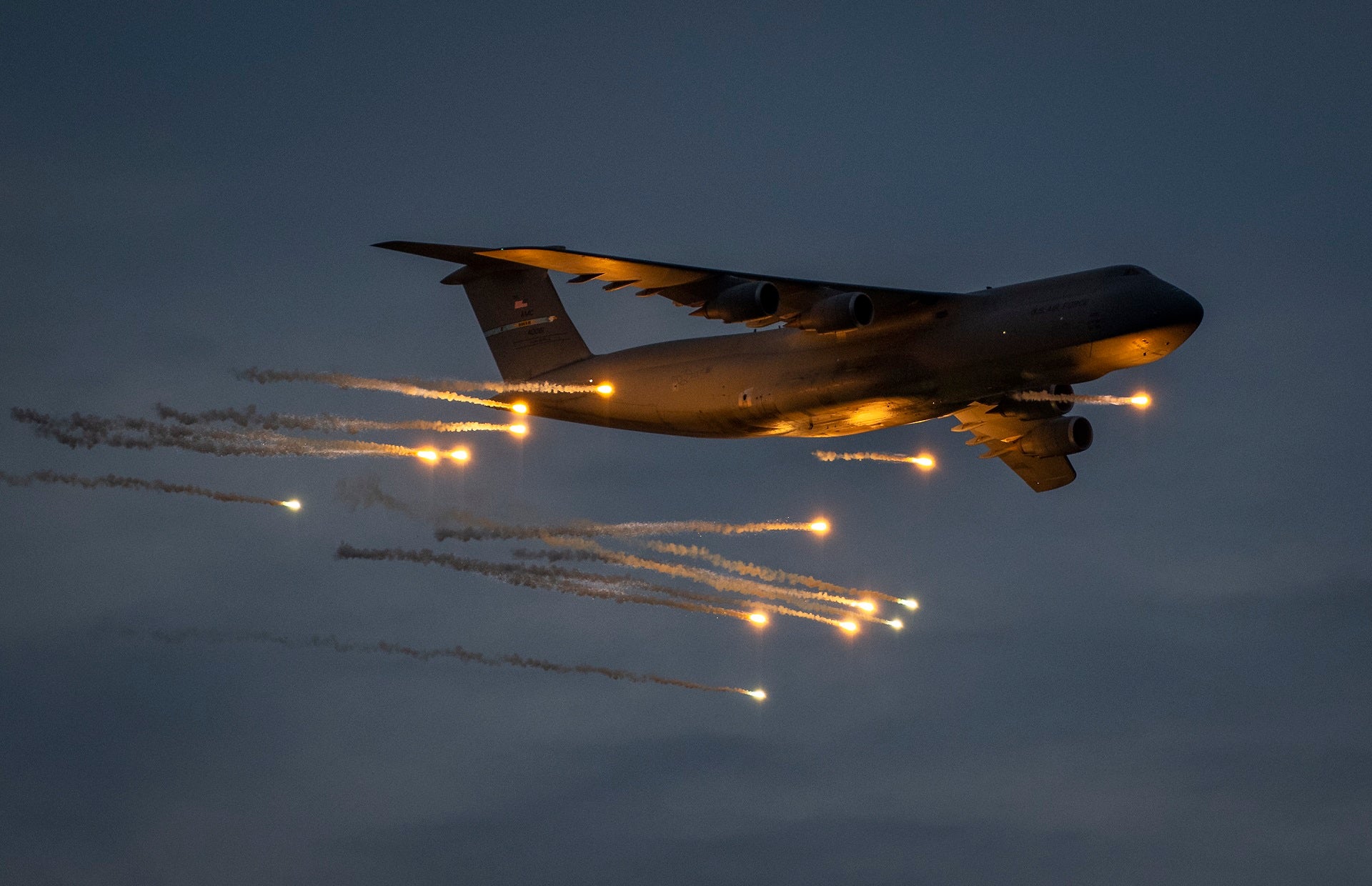
The US Air Force (USAF) has announced that a 436th Airlift Wing C-5M Super Galaxy aircraft released flares during a test conducted at Eglin Air Force Base (AFB) in Florida.
The countermeasures testing was conducted on 12 May.
Engineers, testers and support crew working on the Eglin AFB range witnessed fireworks display courtesy of the C-5M Super Galaxy, the USAF’s largest aircraft.
The C-5M Super Galaxy strategic transport aircraft is a modernised version of the legacy C-5. It was designed and manufactured by Lockheed Martin to extend the capability of the C-5 Galaxy fleet to remain in service at least until 2040.
According to the USAF, the Dover AFB aircraft and aircrew released the flares as part of a two-week defensive countermeasures test programme with the 46th Test Squadron (TS).
The 436th Airlift Wing’s C-5M and aircrew from Dover AFB in Delaware visited the Florida panhandle for a series of night-time defensive countermeasures testing.
The aircraft flew into an area of the range and released more than 15 flares every night during the testing programme.
Same process was repeated many times from different ‘range entry points and angles’ throughout the night.
Air Mobility Command Test and Evaluation Squadron (AMCTES) test director Jim Bonn said that the goal of testing was to increase aircraft and crew combat survivability.
This can be done by evaluating and fielding capabilities of the defensive systems.
The 9th Airlift Squadron’s (AS) operational aircrew participated in the countermeasures testing and released flares going 300k at 1,500ft.
9th AS pilot captain Bryan Chanson said: “There are rare situations when the aircraft does pop flares.
“The crew is usually focused primarily on flying out or away from the potential threat and hoping flares do their intended jobs. The testing allowed us to gain the situational awareness to concentrate on flare dispense in a safe environment.”
Testing of the C-5 was just the start of a two-month test programme.
A detailed analysis of results will be provided by AMCTES test directors to AMC headquarters upon completion of their assessment of the data collected from the Eglin AFB testing.



